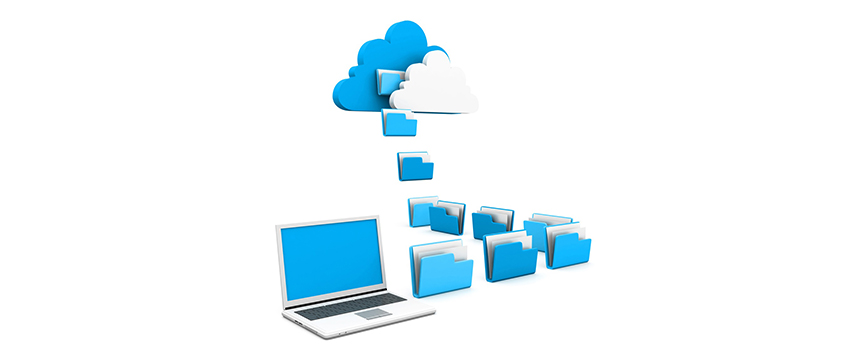If your work involves excessive travelling from one place to another, there are chances that you may come across several incidents which could be like missing of flights, forgotten visa forms or power adaptors left in hotel rooms. You may have encountered many other similar issues and the solution to these problems could be to get more organised and be mindful of your surroundings. However, when it comes to your digital online data, you may want to use a fast and reliable external hard drive, which you can trust for your secondary backups.
Standard hard drives that most people are using are hard disk drives (HDD) and solid-state hard drive (SSD). To know which external drive will suit your needs the most, below is an overview of both hard drives.
Solid State Drive (SSD):
Solid-state hard drives are a relatively newer technology and have rapidly progressed by the inclusion of additional storage capacity every year. This type of external hard drive relies on electronic storage within a non-volatile memory, which means that data will not disappear in case the system is switched off. SSD uses integrated circuits for storing data like a memory card or a USB memory drive.
The mechanism of SSDs is similar to the storage mechanism of a tablet or smartphone. However, SSDs work a lot faster than storage devices in PCs and Mac systems, and mobile devices. The technology used in SSD is NAND, which is a type of flash memory. At the lowest point, floating gate transistors record a charge for storing data. These gates are organised in a pattern, which is then organised into blocks. The size of the blocks can vary, and every row which builds up the grip is called a page. An SSD controller is also provided which performs different functions such as tracking data location. Benefits of SSD:
Benefits of SSD:
Solid state drives are faster for loading games, movies, and applications. Because of its internal technology, SSDs are also lighter and can withstand being moved or dropped accidentally. Moreover, this external drive uses lesser energy, thereby maintaining a cooler temperature of the operating system in which it is being used.
Drawbacks:
SSDs are relatively newer in technology which renders it to be more expensive than its counterpart HDDs. Though this technology is catching up, finding a large solid-state drive can be difficult. In addition to this, SSDs can fail as well. Inside an SSD, there are no moving parts, however, every memory bank holds a limited life expectancy, which means that there is a limit over the number of times the drive can be written to and read from before it stops working. In addition to this, SSDs are considerably more expensive than that of HDDs; that SSDs could cost as high as five times that of HDDs.
Hard Disk Drives (HDD):
The technology which supports hard disk drives is well-tested and well-known. This external drive is being used since the 1960s, and with time, the size of the drive has reduced whereas, its storage capacity has increased considerably. Within HDDs, there are spinning platters which store data. HDDs comprise of magnetically receptive platters and an actuator arm with a head used for reading/writing on every platter along with a motor which spins that platter and moves arms. Additionally, one I/O controller is also included with a firmware that instructs the hardware and correspond with the entire system.
Every platter is structured within concentric circles that are named as tracks. These tracks are further divided into rational units named sectors. Every track and all sector number have unique address which is used for organising and locating data. All data is written to the closest region. An algorithm processes this data before it gets written and allows the firmware to both detect and rectify errors. Most of the drives being used today are connected through a standard interface called the Serial ATA or SATA. Specialised storage systems usually use Serial Attached SCSI (SAS), Fiber Channel along with other interfaces that are designed for this purpose.
Benefits of HDD:
Benefits of hard disk drives are that this technology is being used for years and is hence, proven. Moreover, this drive is less expensive than that of SSDs for the same amount of storage. Currently, HDDs are available with additional storage capacity than that of SSDs. HDD storage can go to as low as a penny per gigabytes. With this amount of storage capacity and affordable rates, HDDs have become the first choice of all those who want huge storage space without spending a lot of money.
 HDD Density
HDD Density
There have been very dramatic advances in HDD technology for storing additional information over HDD platters. This is known as areal density. With immense competition in the market, consumers are enjoying the benefits of larger storage capacity. A technique to meet higher demand is to replace air within drives with helium. This reduces the friction level and supports increased real density. Additional technology included is a heat-assisted magnetic recording (HAMR). This tends to magnetically record data through laser-thermal assistance, which can help increase the capacity of the HDDs by Terabytes in the near future.
Drawbacks of HDD:
A major drawback for hard disk drives can be the result of mechanical parts that are used for reading and writing data. This is so because physically locating and retrieving data involves a lot of time than that of electronically locating and retrieving data. These mechanical parts can either skip or fail in case they are dropped or handled roughly. This issue is mostly found in laptops and at times in desktops. In addition to this, HDDs are also heavier and utilise more energy in comparison to SSDs. Another drawback to the drive is that it generates more noise, produces more heat and may not work as fast as SSDs.
HDD or SSD – What to Select?
The basic difference between solid-state drives and hard disk drives lies within the technology, which is incorporated within it for storing and retrieving data. HDDs may be a lot cheaper and you can also get a whole lot of storage space in these drives. However, on the other side, SSDs are lighter, faster and more durable and utilise lesser energy. Whether you are using an SSD or an HDD, having a backup plan is essential, as any drive can fail. Having a local backup, coupled with a secure cloud backup, will be very helpful and perhaps critical in getting you started to protect your data. It is your needs which will dictate which storage drive will be the best option for you.
Backup Everything is here to assist you in choosing the right hard drive and cloud backup packages to protect your data. Why not reach out to us? We will be glad to bring you up-to-speed with the latest technologies in the industry.


